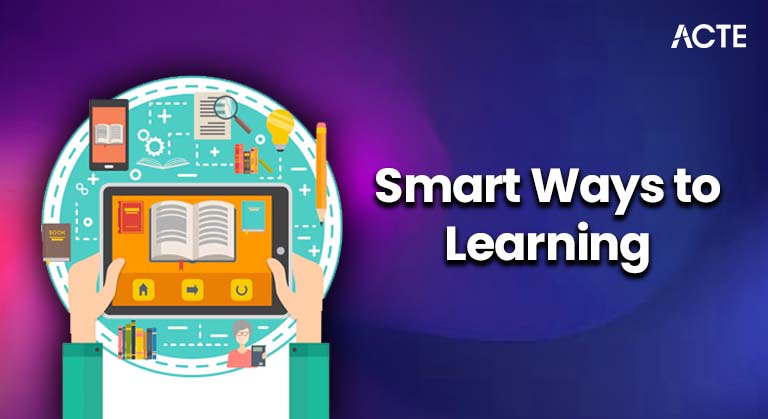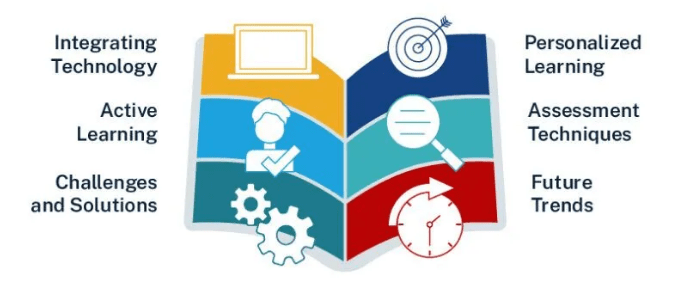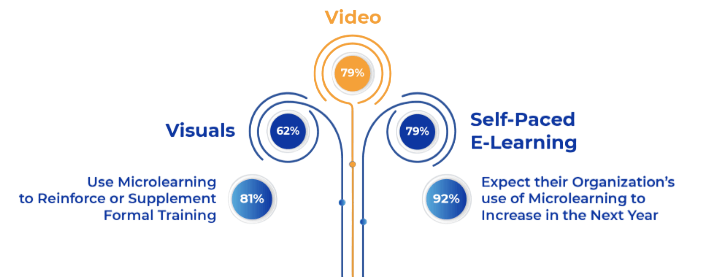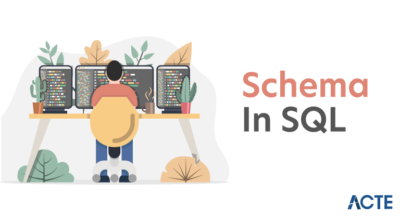
- What Does “Smart Learning” Mean?
- Traditional vs. Smart Learning Methods
- Role of Technology in Learning
- Microlearning and Bite-Sized Content
- Gamification in Education
- Adaptive Learning Systems
- Smart Note-Taking Techniques
- Leveraging Mobile Apps for Study
What Does “Smart Learning” Mean?
Smart learning refers to a modern, technology-enhanced approach to education that transforms the traditional learning experience through the use of digital tools, data analytics, and intelligent systems. At its core, smart learning is designed to be adaptive, interactive, and highly personalized. It moves beyond the conventional one-size-fits-all model, offering learners tailored content based on their individual needs, preferences, progress, and learning styles. By using technologies such as artificial intelligence, machine learning, and real-time feedback mechanisms, smart learning environments can adjust the pace, difficulty, and type of instruction for each student, thereby improving both engagement and outcomes. This approach is distinct from traditional education methods, which often emphasize standardized instruction, passive learning, and memorization. Instead, smart learning encourages active participation, critical thinking, and collaboration, all of which are integral to effective Placement and Softskills Training. Tools such as educational apps, learning management systems, virtual classrooms, and gamified content allow for more dynamic and immersive learning experiences. Instructors can also benefit from smart learning systems, gaining access to detailed analytics that help them identify learning gaps, monitor progress, and provide timely support. Another key advantage of smart learning is its flexibility. Learning can take place anytime and anywhere, making it ideal for both formal and informal educational settings. Whether in schools, universities, or corporate training environments, smart learning supports lifelong learning by enabling continuous skill development. As technology continues to evolve, smart learning is becoming an essential part of modern education, reshaping how knowledge is delivered and acquired to meet the demands of a fast-changing world.
Traditional vs. Smart Learning Methods
Traditional learning is rooted in face-to-face instruction within a classroom setting, typically guided by printed textbooks, structured lectures, and a fixed curriculum. This method has long served as the foundation of formal education, emphasizing uniform delivery and standardized assessments. While effective in certain contexts, traditional learning often offers limited opportunities for personalization, as students are generally expected to progress at the same pace, regardless of individual strengths or learning needs. In contrast, smart learning represents a shift toward a more flexible, interactive, and technology-driven educational experience. It incorporates advanced tools such as learning management systems (LMS), artificial intelligence (AI), and multimedia content that allows students to engage with material in diverse and stimulating ways. To explore how these innovations are reshaping professional pathways in business and finance, explore Trends in Commerce Career a resource that highlights emerging roles, digital competencies, and evolving industry expectations in the commerce domain. Smart learning supports anytime, anywhere access to resources, enabling students to learn at their own pace and convenience. It also provides real-time progress tracking and instant feedback, which help learners understand their performance and adjust their efforts accordingly. One of the key distinctions between the two approaches is their educational focus.

Traditional learning tends to prioritize knowledge acquisition through lectures and repetition, whereas smart learning encourages the development of critical thinking, problem-solving, collaboration, and other 21st-century skills. This transition from passive to active learning is a defining feature of the smart learning model. By promoting greater student engagement and adaptability, smart learning aims to prepare learners for a rapidly changing, technology-oriented world where continuous learning and innovation are essential.
To Explore Soft Skill in Depth, Check Out Our Comprehensive Soft Skill Certification Training To Gain Insights From Our Experts!
Role of Technology in Learning
- Access Through Devices: Laptops, tablets, and smartphones serve as primary tools for smart learning, giving students easy access to digital resources like eBooks, online courses, educational videos, and interactive simulations anytime and anywhere.
- Learning Management Systems: Platforms such as Google Classroom, Moodle, and Edmodo facilitate smooth communication between teachers and students, simplify assignment distribution and submission, and support progress tracking, enhancing overall learning management.
- AI and Machine Learning: Artificial Intelligence and Machine Learning analyze student data to understand learning patterns and performance. This enables the delivery of personalized content tailored to individual strengths, weaknesses, and learning styles.
- Virtual Reality (VR): VR technology immerses learners in simulated environments where they can explore complex concepts through interaction, such as virtual labs or historical site visits, making learning more engaging and memorable, especially when studying Guide to Training and Development.
- Augmented Reality (AR): AR overlays digital information onto the real world, allowing learners to interact with 3D models and visualizations that enhance understanding of abstract or complicated subjects.
- Cloud Computing: Cloud technology supports the storage and sharing of educational materials and student data securely, enabling collaborative projects and real-time updates accessible from any device with an internet connection.
- Organized and Accessible Learning: Together, these technologies make education more organized, flexible, and accessible, supporting diverse learning needs and fostering continuous engagement both inside and outside the classroom.
- Small, Manageable Units: Microlearning breaks down complex subjects into small, focused lessons that are easy to digest. Each unit typically lasts from a few seconds to a few minutes.
- Focused Learning Outcomes: Each microlearning segment targets a specific concept or skill, making it easier for learners to concentrate and master one topic at a time without distraction.
- Reduces Cognitive Overload: By delivering information in bite-sized chunks, microlearning helps prevent learners from feeling overwhelmed, improving retention and comprehension, especially in the context of Softskills Training.
- Supports Just-in-Time Learning: Learners can access targeted content exactly when they need it, allowing for quick skill refreshers or immediate application in real-world scenarios.
- Fits Busy Schedules: The short duration of microlearning makes it convenient for learners with limited time, enabling education to fit naturally into daily routines.
- Examples of Use: Language apps like Duolingo use microlearning with brief vocabulary exercises, while platforms like LinkedIn Learning offer segmented videos on topics such as coding, communication, and project management.
- Versatile Applications: Microlearning is effective in both academic settings and professional development, providing flexible, personalized learning experiences that adapt to different needs and contexts.
- Real-Time Content Adjustment: Adaptive learning systems use data analytics and artificial intelligence to modify educational content in real time, tailoring lessons according to each student’s performance and learning pace.
- Identifying Knowledge Gaps: These systems continuously assess student understanding to detect areas where learners struggle, allowing targeted intervention on specific topics rather than a one-size-fits-all approach.
- Adjusting Difficulty Levels: Based on ongoing assessment, the difficulty of tasks and questions is automatically increased or decreased to match the learner’s skill level, keeping them challenged without causing frustration, which is essential knowledge for Career Opportunities.
- Personalized Learning Paths: Adaptive platforms create customized learning journeys for each student, recommending activities and resources that align with their strengths and weaknesses, ensuring more effective mastery of concepts.
- Supporting Struggling Students: Students who face difficulties receive additional practice and support tailored to their needs, enabling them to catch up without falling behind the rest of the class.
- Accelerating Advanced Learners: High-achieving students are not limited by the pace of the class. Adaptive systems allow them to progress faster, diving deeper into advanced topics to maintain engagement and motivation.
- Examples of Platforms: Popular adaptive learning platforms include DreamBox, which focuses on math education, and Smart Sparrow, used for science and medical training. These tools exemplify how adaptive learning enhances education by responding to individual learner data.
Are You Interested in Learning More About Soft Skill ? Sign Up For Our Soft Skill Certification Training Today!
Microlearning and Bite-Sized Content

Gamification in Education
Gamification in education involves the use of game elements such as points, badges, leaderboards, levels, and challenges within learning activities to make the experience more engaging and motivating for students. It transforms traditional classroom lessons into interactive experiences that can increase participation, enhance motivation, and improve learning outcomes. By incorporating the fun and reward systems found in games, educators can create environments where students are more willing to take initiative and stay involved in the learning process. Examples of gamified learning tools include platforms like Kahoot, Classcraft, and Minecraft Education Edition. These tools allow students to earn rewards for completing tasks, solving problems, and collaborating with their peers. Classcraft allows students to develop characters and work in teams to accomplish goals based on academic and behavioral progress. To understand how student performance can be measured and compared across groups, explore Percentile and How It Is Calculated a resource that explains ranking logic, score distribution, and how percentile metrics support personalized learning and progress tracking. Minecraft Education Edition offers a creative, open-ended platform where students explore and learn by building and experimenting in a virtual world. One of the key benefits of gamification is its ability to tap into intrinsic motivation. Instead of learning for external rewards like grades alone, students are encouraged to engage with the material for the sake of challenge, curiosity, and progress. Gamification also supports mastery learning by offering immediate feedback, allowing students to learn from their mistakes and try again without penalty. This process builds confidence and reinforces understanding. In addition, the collaborative nature of many gamified activities helps students develop communication and teamwork skills. Overall, gamification is a valuable approach that adds excitement, structure, and meaning to the learning experience.
Are You Considering Pursuing a Master’s Degree in Soft Skill? Enroll in the Soft Skill Masters Program Training Course Today!
Adaptive Learning Systems
Are You Preparing for Soft Skill Jobs? Check Out ACTE’s Soft Skill Interview Questions & Answer to Boost Your Preparation!
Smart Note-Taking Techniques
Effective note-taking plays a vital role in academic success by helping students capture, organize, and review information efficiently. In the digital age, smart note-taking goes beyond traditional pen-and-paper methods by using technology to improve how notes are created and accessed. With the help of modern tools like Evernote, OneNote, and Notion, students can create well-structured multimedia notes that include text, images, links, voice recordings, and even embedded documents. These platforms also offer tagging and categorization features, which make it easier to search for and retrieve information when needed. One of the key benefits of digital note-taking is its ability to sync across multiple devices. Students can start taking notes on a laptop during a lecture, review them later on a tablet, and add highlights or comments using a smartphone. This level of flexibility supports consistent learning habits and ensures that important information is always within reach. To explore how structured learning programs contribute to employee growth, retention, and organizational success, explore Importance of Training and Development a resource that highlights key benefits such as skill enhancement, performance improvement, and long-term career development. Additionally, smart note-taking apps often support real-time collaboration, allowing students to work together on shared notes or study materials, even from different locations. Features such as voice-to-text conversion, handwriting recognition, and customizable templates help make the note-taking process faster and more tailored to individual learning preferences.
Leveraging Mobile Apps for Study
Mobile apps have transformed education by providing learners with convenient, on-the-go access to a wide range of study materials and interactive learning experiences. These apps cater to different learning styles and subjects, making education more personalized and flexible. For example, Anki is popular for its flashcard system that helps with memorization and spaced repetition. Platforms like Coursera and edX offer comprehensive online courses from top universities and organizations, allowing learners to gain new skills or deepen their knowledge in various fields. Quizlet provides practice tests and learning games that engage students while reinforcing key concepts. Many educational apps include gamified features that increase motivation and make studying more enjoyable, enhancing the learning experience in Softskills Training. Progress tracking helps learners monitor their achievements and stay focused on their goals, while community sharing options encourage collaboration and peer support. Language learners, in particular, benefit from apps like Babbel and Memrise, which offer structured lessons, vocabulary drills, and interactive exercises to build fluency. Meanwhile, students studying science, technology, engineering, and mathematics (STEM) can use powerful tools such as Wolfram Alpha and Photomath to solve complex problems, understand formulas, and check their work step-by-step. One of the most important advantages of mobile learning apps is their ability to democratize education. They make high-quality learning resources accessible to anyone with a smartphone or tablet, regardless of location or background. This breaks down traditional barriers and provides opportunities for lifelong learning. As mobile technology continues to evolve, these apps will likely play an increasingly important role in shaping how people learn and grow in an ever-changing world.


